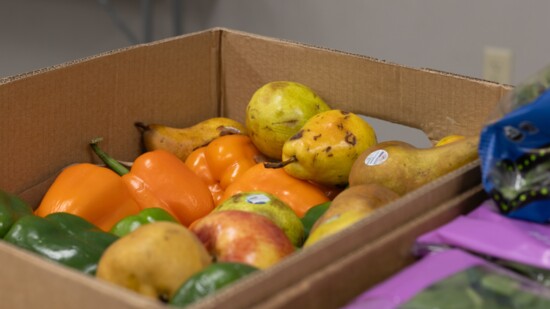While food waste and food insecurity might not be top-of-mind for most individuals, Last Mile Food Rescue is working to change that. By addressing both crises with a singular mission for food equity, the local nonprofit is significantly impacting countless lives in Greater Cincinnati.
Since its creation in October of 2020, Last Mile Food Rescue has redirected over 10 million pounds of unused food from more than 200 donors, which equates to 8.3 million meals provided to the food-insecure. In doing so, its efforts have also prevented an estimated 29 million pounds of CO2 emissions from occurring at local landfills.
“As a society, we waste an astounding amount of food–up to 40% of all food produced in the U.S. ends up in landfills,” reports Jocelyn Henderson, marketing manager for Last Mile Food Rescue. “It’s more than just wasted food,” she says, “it’s also a massive waste of resources such as water, energy and labor.”
Henderson explains that one out of five individuals today are facing food insecurity, uncertain where their next meal might come from.
“If we rescued just 25% of this wasted food, we could end food insecurity,” she reports.
These aren’t undesirable or expired food items. The food is fresh, nutritious and perfectly good to eat.
“It's surplus that otherwise would just be tossed,” Henderson stresses.
The Last Mile Food Rescue mission was inspired by similar programs operating in other cities, like Pittsburgh. While studying community food insecurity in 2018, Tom Fernandez, co-founder of Last Mile, learned of these other large-scale food rescue operations; his fellow co-founder Julie Shifman, meanwhile, had become inspired by her sister’s work with a successful food rescue operation in Atlanta. Fernandez and Shifman were then introduced to each other by Kurt Reiber, CEO of The Freestore Foodbank–an organization also dedicated to eliminating hunger in the Cincinnati community–and Last Mile Food Rescue was born.
Here’s how it works: Volunteers log into a mobile phone app–Henderson describes it as simple to use, like an “Uber-style” app–to pick up excess food from places like local grocery stores, restaurants, stadiums, hospitals and cafeterias. After picking it up from these locations, the volunteers can then deliver that excess food to nearly 100 partner agencies in Greater Cincinnati, including Hope House Mission, Matthew 25 Ministries, Ronald McDonald House, St. Vincent de Paul and many, many more. The agencies, in turn, are able to provide it to clients, at no cost to them.
Last Mile Food Rescue accomplishes all of this with a network of over 750 dedicated volunteers.
“We call them Food Rescue Heroes,” Henderson explains.
These Food Rescue Heroes utilize a logistics solution to connect excess food with those who need it the most.
Lakota East and Lakota West High Schools are two of many donor schools from the area that have supplied food that otherwise would have gone to waste.
“Last Mile is helping people in very real ways,” attests John Sinclair, Outreach & Pastoral Manager of Impacting Tomorrow, one of Last Mile Food Rescue’s many food distributors. “We had a woman that came in,” he says, “and she grabbed my face with her hands, and she looked at me and she said, 'Now, I want you to hear this; if we were not able to get this food, my family would not be eating.'”
Henderson passionately explains how vital the work that Last Mile Food Rescue carries out can be.
“Our efforts foster a stronger, more resilient community where resources are used wisely, and everyone has a chance to thrive,” she says. “Last Mile Food Rescue is not only ensuring that people have access to fresh, healthy meals, but also promoting sustainability and environmental responsibility.”
Still, Henderson points out, many incorrectly believe food rescue is merely a small-scale solution to address food waste. That’s just not true, she says, adding that food rescue programs absolutely can have a large-scale impact on reducing food insecurity and waste.
“The impact of food rescue goes beyond numbers—it's about connecting with our neighbors, supporting families and building a community that cares for one another,” Henderson says. “Every small action, whether it’s volunteering an hour of time or spreading the word about our mission, can have a direct impact.”
Visit LastMileFood.org to learn more about how to download the app and get involved.
"Last Mile Food Rescue has redirected over 10 million pounds of unused food from more than 200 donors."
